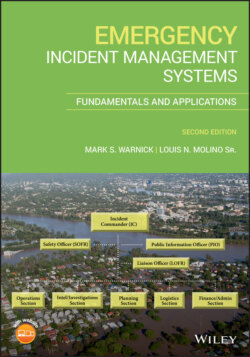Читать книгу Emergency Incident Management Systems - Mark Warnick S., Louis N. Molino Sr - Страница 47
2.1 The Lifecycle of an Incident
ОглавлениеIncident management is the skill of making decisions that will mitigate the negative effects of an emergency incident. This form of management often occurs while the incident is still unfolding, and in most instances, the incident is still expanding or growing. If an incident is not managed, or if it is improperly managed, the conditions of this event will deteriorate even more. Through utilizing the principles and philosophies, and creating and enacting protocols, there can be a serious reduction in the negative effects that the incident can have. By reducing the lifecycle of an incident, we reduce the negative impact it has. An example of this can be seen in the graphic below which demonstrates the lifecycle of a crisis.
In this graphic, you can see that the lifecycle of a crisis is substantially reduced by introducing intervention. While this graphic is just an illustration, it provides a glimpse of how proper intervention can reduce the negative effects of an incident and reduce the life of the crisis.
The actions that are taken by an Incident Commander (IC) in conjunction with staff and ground personnel reduce the impact significantly, providing that the IMS method is used. If no IMS method is utilized, the incident will eventually peak and cause more death and destruction. This is not to say that all types of incident management will reduce the negative effects. A haphazard or unproven IMS method might allow this lifecycle to peak much in the same manner as no intervention. For that reason, a proven IMS method is needed to reduce the lifecycle of an incident.
